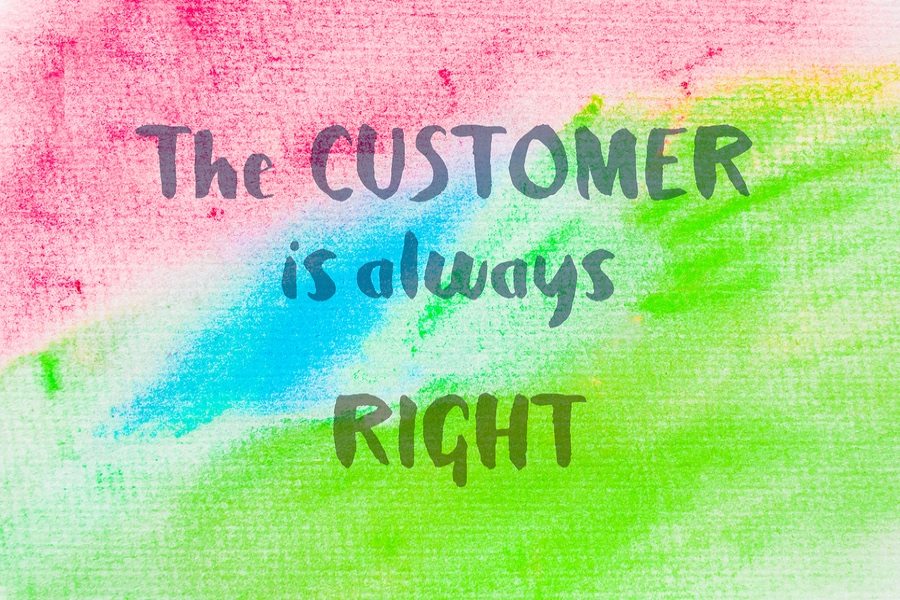
The Customer is NOT always right
The customer is not always right. This is a statement in fact. You see, (some) customers are often times wrong, and so they cannot always by right. Logic?
This writer stumbled on a recently published article by Strativity, a US based international customer experience consulting firm. And what would you know? The article was entitled “The customer is not always right!” For those interested in the whole article, click here. It makes for interesting reading.
The customer is not always right.
However, whether a customer is RIGHT or WRONG, is not the focus of this article.
This article is aimed at giving you an insight into measuring how “customer-centric” your service provider is, be it a city or national utility service provider, your cable TV company, or the laundro-mart down the street from where you live. A customer-centric company, as defined among industry experts, is a company that places the customer’s needs at the centre of all their internal business processes. You see, a provider who is more customer-centric will worry less about getting it wrong with their customers and attracting their ire. If your provider is customer-centric, chances are you are less likely to have a bad experience, and in the isolated case that you do have one, they are wired to receive your complaint and handle it in a manner that leaves you satisfied. Well, most of the time.
What then can be considered as some essential qualities of a customer-centric company? When evaluating a provider, do you take into account how “customer-centric” your target company is? As a consumer do you deliberately seek the cheapest option? Or, do you weigh the odds in favour of establishing a relationship with a company that builds itself around your satisfaction and therefore offers you a better bang for your buck?
Here is how, as a customer, you can set yourself to be more aware of selecting a company that is more likely to keep it’s promise and that will consistently live to it’s service offering for the duration of the relationship.
Responsiveness
In this day and age, the power of social media cannot be ignored or taken for granted by service providers. Customers are increasingly going online, and they expect to reach their provider’s help-line via multiple channels. Even more, they expect rapid reaction from their service provider. Companies are quickly learning that to stay on top of their game, they need to engage customer interaction using as many channels as possible. A customer-centric provider will however not stop there. A company with the customer at the centre of their business will also ensure continued responsiveness and a passion for circling back to close the loop with their customer whenever they have an update.
Accessibility
Companies that do a full circle on accessibility are sure to give themselves an edge in generating goodwill with their customers. So if your service provider has a call-centre, can be reached by SMS, offers Skype media and is available on Facebook, Twitter, Instagram, etc, it means they have taken notice of the need to provide all reasonable access possibilities to their customers. Being accessible also entails your provider incorporating it in their strategy to be friendly, courteous and approachable by their customers.
Empathy
Many providers today boast of “under-one-hour” or “within a 24-hour” response time. Companies that live up to this demonstrate their understanding of what it takes to be customer-centric. And even more valuable than just responding, is responding with empathy. Empathy (or the lack of it) can be the last straw that turns an irritated and disappointed customer into a raging volcano. It is important for companies to exude an empathetic character, portraying to their clients that they care, that they are listening attentively to feedback and complaints, and that they are understanding. Many companies who achieve a high level of customer loyalty are the ones that are strategically empathetic. And it’s no coincidence they are leaders in their market.
Nimble
Feedback is a tool. When customers gives feedback, either by way of a survey or a complaint, the feedback must be harnessed and used as a guide to the company’s internal thought and development process. Otherwise feedback is useless. Sometimes customers make the most difficult of requests, be it for a service upgrade, or even a new product. It doesn’t mean that the company must necessary do whatever it’s customers say. But the requests and comments must filter into the internal communication channels and percolate down to play a major part in the direction of the strategic road map of the company. If feedback isn’t treated this way then why even bother to siphon it from the customers?
Cohesive
The problem with many companies is that the the internal set-up of departments can cause the existence of disconnected silos. With an increased company-to-customer interaction and along all the various channels of communication, a company can come across as lacking cohesion. Existing customers may want to know when your next service will be released; and another may be nagging for additional information on the features that are included (or not) in an alternate package to the one they are subscribed to. If your provider hasn’t set themselves up to collaborate and communicate internally, they will fail to provide timely answers to their existing or would-be customers. And in this day and age, that is a recipe for disaster.
Maybe this article should have been entitled “How Customer-Centric is your Service Provider?” instead of The Customer is NOT always right. Irrespective, this writer thinks that in today’s challenging environment where customers demand value for their money with impunity and have the leverage to give service providers a lashing in public, engineering the company into a customer-centric provider is vital. It will eliminate and reduce the incidents where customers berate agents and ask to speak to their supervisors who in turn bend backwards and cave in, all so that they can save face.
Article contributed by Walid Zoobi


